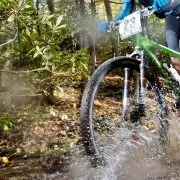Guide to Wildflowers in Pisgah National Forest near Brevard, NC
Welcome to Pilot Cove! Nestled in the heart of the Blue Ridge Mountains near Brevard, North Carolina, our cozy cabins offer a peaceful retreat surrounded by nature’s splendor. One of the many natural wonders of our area is the breathtaking display of wildflowers that adorn the landscape in Pisgah National Forest. From vibrant bursts of color to delicate blooms, the wildflowers in Pisgah National Forest are a sight to behold. Join us as we take you on a journey through the blooming beauty of wildflowers in Pisgah National Forest near Brevard, NC.

Floral Diversity in Pisgah National Forest
Pisgah National Forest is a haven for wildflowers, boasting an impressive array of species that thrive in the diverse ecosystems found within the forest. With over 500,000 acres of protected land, Pisgah National Forest is home to an astonishing variety of wildflowers that bloom from early spring to late fall. From the lower elevations near the forest’s entrance to the higher elevations along the Blue Ridge Parkway, each season brings its own unique floral display.
In spring, the forest comes alive with a burst of color as trilliums, bloodroots, and spring beauties dot the forest floor. The vibrant yellow flowers of trout lilies and the delicate white petals of hepaticas are also a common sight during this time. As the weather warms up, the wildflowers in Pisgah National Forest continue to thrive, with azaleas, rhododendrons, and mountain laurels adding a splash of color to the landscape.
During the summer months, the forest is transformed into a kaleidoscope of colors as coneflowers, black-eyed Susans, and wild bergamot create a dazzling display. The tall stalks of bee balm, also known as wild Oswego tea, attract butterflies and hummingbirds, adding to the forest’s vibrant ecosystem. In fall, the forest takes on a golden hue as asters, goldenrods, and sunflowers bloom, providing a stunning contrast against the changing leaves of the hardwood trees.

Best Wildflower Hikes in Pisgah National Forest
Exploring the wildflowers of Pisgah National Forest is a treat for nature lovers and outdoor enthusiasts alike. There are numerous hiking trails that offer opportunities to witness the beauty of wildflowers up close. Here are some of the best wildflower hikes in Pisgah National Forest:
- Pink Beds Loop Trail: This easy 5-mile loop trail is known for its diverse wildflower displays, including trilliums, violets, and foamflowers. The trail meanders through lush forests, along streams, and across boardwalks, providing a picturesque setting to enjoy the floral beauty of the forest.
- Graveyard Fields Loop Trail: Located along the Blue Ridge Parkway, this moderate 3.2-mile loop trail takes you through fields of wildflowers, including asters, goldenrods, and coneflowers. The trail also features two stunning waterfalls, making it a perfect hike for nature and waterfall enthusiasts.
- Art Loeb Trail: This challenging 30-mile trail traverses through Pisgah National Forest, offering panoramic views of the surrounding mountains and valleys, along with an abundance of wildflowers. From spring beauties and trilliums in the lower elevations to rhododendrons and mountain laurels in the higher elevations, this trail is a wildflower enthusiast’s paradise.
- Looking Glass Rock Trail: This strenuous 6.4-mile out-and-back trail rewards hikers with breathtaking views of Looking Glass Rock and a profusion of wildflowers along the trail. In spring, the trail is adorned with trilliums, violets, and other early bloomers, while summer brings a burst of color with coneflowers, black-eyed Susans, and bee balms. The trail also offers opportunities to spot rare and endemic wildflowers, such as the pinkshell azalea, which is found only in the Southern Appalachian Mountains.

Tips for Wildflower Viewing
To make the most of your wildflower adventure in Pisgah National Forest, here are some helpful tips:
- Plan your visit during peak wildflower season: The timing of wildflower blooms can vary depending on weather conditions and elevation. Generally, spring and early summer (April to June) are the best times to catch the wildflowers in full bloom in Pisgah National Forest.
- Stay on designated trails: While it may be tempting to venture off-trail to get a closer look at the wildflowers, it’s important to stay on designated trails to protect the fragile ecosystems and avoid trampling on the flowers.
- Bring your camera and binoculars: Wildflowers in Pisgah National Forest offer excellent opportunities for nature photography and bird watching. Don’t forget to bring your camera and binoculars to capture the beauty of the blooms and spot any wildlife that may be attracted to the flowers.
- Practice Leave No Trace principles: As with any outdoor adventure, it’s crucial to follow Leave No Trace principles. Pack out any trash, respect wildlife and their habitats, and avoid picking or disturbing the wildflowers.
- Wear appropriate gear: Make sure to wear sturdy hiking shoes, as some trails in Pisgah National Forest can be rocky and uneven. Also, bring layers and be prepared for changing weather conditions, as mountain weather can be unpredictable.
- Educate yourself about wildflowers: Take the time to learn about the different wildflower species that you may encounter in Pisgah National Forest. There are a number of guidebooks and online resources that can help you identify the flowers and learn about their ecological significance.
Wildflowers in Pisgah National Forest near Brevard, NC are a natural spectacle that should not be missed. From the diverse floral displays in spring to the colorful blooms of summer and fall, the forest is a treasure trove of natural beauty. Whether you’re an avid hiker, a nature lover, or a photography enthusiast, exploring the wildflowers in Pisgah National Forest is an unforgettable experience. So, put on your hiking boots, grab your camera, and get ready to be captivated by the blooming beauty of wildflowers in Pisgah National Forest during your stay at Pilot Cove!







